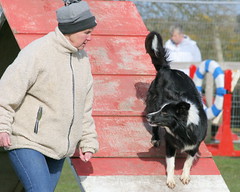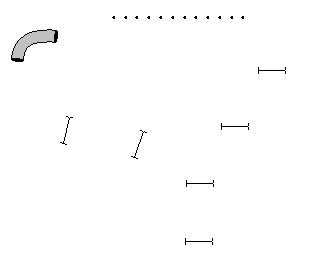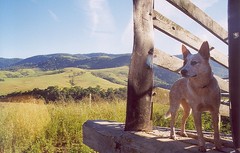Before I can say that she 'knows' the jump I should be able to:
- Send her over from 5m, straight and at angles
- Recall her over, straight and at angles
- Front cross before and after
- Rear cross before and after
- Wrap her around the jump upright to the left and right
- Turn her right or left on a verbal only
- Send around the jump, to jump back towards me
- Call her around the jump without backjumping
- Turn her to repeat the jump on a verbal cue
- Get her to wait in front of the jump - lead out
- Get her to run past a jump without taking it.













 We took four jumps to the park to practice some front crosses, but when I unpacked the bag one had a broken bracket. So I set up some three jump exercises, moving one jump to make angles more or less acute.
We took four jumps to the park to practice some front crosses, but when I unpacked the bag one had a broken bracket. So I set up some three jump exercises, moving one jump to make angles more or less acute.

